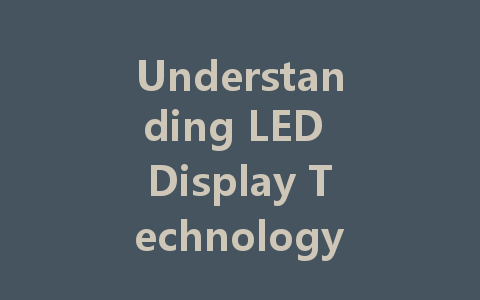
In the ever-evolving world of technology, LED displays have emerged as vital tools, revolutionizing how we consume media, advertise products, and communicate information. Whether you are in retail, the event industry, or simply curious about the latest in display technology, this guide will walk you through the essentials of LED displays, helping you understand their functionalities and applications in the Philippines.
What is an LED Display?
LED stands for Light Emitting Diode. LED displays are screens that use these diodes to produce vibrant images and graphics. They are known for their brightness, energy efficiency, and wide viewing angles compared to traditional display technologies like LCD and CRT. LED displays are not only popular for televisions and monitors but are also widely used in signage, advertising, and various public venues.
How LED Displays Work
The fundamental operation of an LED display involves the arrangement of multiple LED diodes in pixels. Each pixel can produce three colors: red, green, and blue (RGB). By adjusting the brightness of these colors, an LED display can produce a myriad of hues and shades. This mix of colors results in stunning visuals that stand out, making them perfect for advertising in crowded spaces.
Types of LED Displays
Understanding the different types of LED displays is essential for selecting the right one for your needs. Here are some common types:
This type of display is made up of individual LED modules that are directly visible to the viewer. They are typically used for large outdoor and indoor screens, like billboards and sports arenas.
LED video walls consist of several smaller LED panels working together to create one large screen. They are popular in concert venues, conferences, and events due to their ability to display intricate videos and graphics seamlessly.
Transparent LED screens offer a unique way to present content while still allowing visibility through the display. These are often used in store windows and architectural designs to create an eye-catching effect.
These displays can be bent and shaped to fit a variety of forms, making them ideal for creative applications. They add a new level of flexibility in design, especially for events and exhibitions.
Applications of LED Displays in the Philippines
The versatility of LED displays allows for a wide range of applications. In the Philippines, they are extensively used in various sectors:
Retailers leverage LED displays to capture the attention of potential customers. Dynamic advertisements and promotions displayed on LED walls or screens can drive foot traffic and boost sales.
From concerts to sport events, LED displays enhance the experience for audiences. Large video walls provide critical information and entertainment, keeping viewers engaged throughout the show.
LED screens serve as effective tools for broadcasting public information such as alerts, announcements, and news updates in places like bus terminals and train stations.
In the corporate world, LED displays are used for presentations and internal communications, improving visibility in large meeting rooms and conference centers.
Factors to Consider When Choosing an LED Display
When considering an LED display, several factors will influence your decision, including:
Pixel pitch refers to the distance between the center of one pixel to the next. A smaller pixel pitch usually means a higher resolution and better image quality, essential for environments where viewers are closer to the display.
Brightness is measured in nits and is vital for outdoor displays. If you plan to use your LED display in direct sunlight, a higher brightness level is crucial for visibility.
The refresh rate determines how smoothly the images are displayed. A higher refresh rate is necessary for video content to avoid flickering and blurriness.
Understanding the power consumption of your potential LED display can help you manage operating costs. Energy-efficient models can save you money over time.
Future of LED Displays
The future of LED display technology looks promising. With advances in OLED and MicroLED technologies on the horizon, we can expect even more enhancements in terms of image quality, flexibility, and application versatility. In the Philippines, as businesses continue to embrace digital transformation, LED displays will likely play an increasingly critical role in marketing, advertising, and communication strategies.
Conclusion
LED displays have become indispensable tools across various sectors due to their versatility and performance. Whether it’s engaging potential customers in a retail space or providing vital information in public areas, LED technology delivers eye-catching visuals that captivate audiences. As you explore the world of LED displays, consider your specific needs and potential applications to make an informed choice. With the right LED display, you can enhance visibility, communication, and engagement in any setting.